I'll never forget my first taste of fresh cacao, sour and floral and so much sweeter than I had anticipated. I was so surprised at the bitterness that leaked out when I bit down, that I nearly spit it out. I'd been reviewing bean-to-bar chocolates alone for years, but had never consumed any form of raw cacao.
That experience was nearly seven years ago, at the NW Chocolate Festival in Seattle. Less than a year later I was working on a cacao plantation in Ecuador, and now I've finally managed to make it to a cacao plantation in Asia. But still, somehow, I wasn't satisfied.
I'd had this niggling question in my mind for years, regarding what happens to all the cacao pulp on an industrial scale. All of the juice doesn't just disappear into thin air, yet when you receive the beans they're (hopefully) dried to a pleasant 7% moisture content. Where did all the beautiful juice flow off to?
So I set out to uncover why the unique flavor of cacao pulp seems to get so lost in the process, and how we can access it without necessarily heading to a farm.
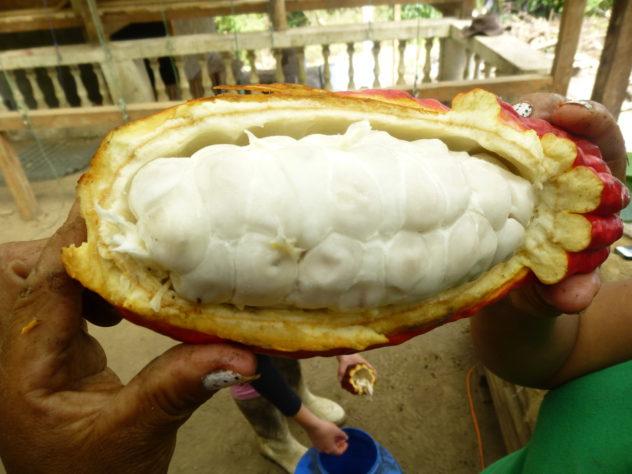
Jump To
What is Cacao Pulp?
If you're reading this, hopefully you already know how chocolate is made: cacao beans are roasted and then peeled and ground, and sugar is added to sweeten the mass. Then bam! Chocolate.
However, before those critical chocolate-making steps were executed, those cacao beans came from a tree. They started off in pods, which grow every which way off of this tropical tree. After these pods were harvested, their seeds were removed, fermented, and dried before being shipped to a chocolate maker or turned directly into chocolate.
This isn't the full story, though. Like all fruits, cacao pods are characterized by having a high sugar content, in their case stored in the sweet white pulp surrounding the seeds. When the seeds are removed in preparation for fermentation, most of the white pulp goes with them.
So cacao pulp is simply the juice & fruit solids of the tropical cacao fruit, while cacao liquor is the pure fermented alcohol made form cacao pulp.
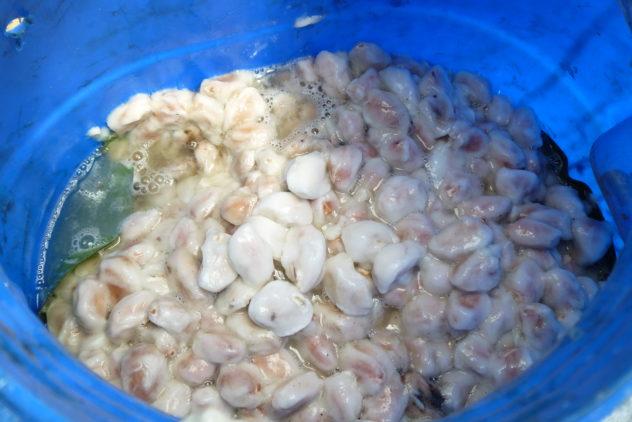
But unlike most fruits, the seeds of the cacao plant need to be fermented in order to achieve their characteristic chocolatey flavor. The yeasts and bacteria which aid in this fermentation feed off of the sugars in the pulp, therefore cacao pulp is a necessary ingredient in chocolate making, while also being a by-product of it.
Some may argue that you could replace the pulp with other sugars for the yeast to feed off of, but not only is that unnecessary work, but it's also less natural. Chocolate is a perfect food as is, so why mess with a good thing?
The answer is curiosity. Recently, the general public has become more & more interested in what fresh cacao tastes like, and sharing all the flavors of cacao, as well as the uniqueness factor of the cacao fruit's flavor.
The taste is often compared to a lychee mixed with a plum, but I've also noted floral tones and high acidity. In the end, these unique flavors and the high sugar percentage is what has led farmers to utilize the fermented or fresh cacao pulp in a multitude of creations over the years.
Until recently, these creations (most of which are alcoholic, since alcohol is a by-product of fermentation) were almost exclusively consumed on the farm. Cacao fermentation is done by wild yeasts & bacteria found in the regions where it takes place, so there are no specific strains to isolate or name, at this time.
On most farms, the scale is still too small to make enough product for market. But with the rise of co-ops and cacao brands, there are now many more opportunities for cacao pulp products. So what are they doing about it?
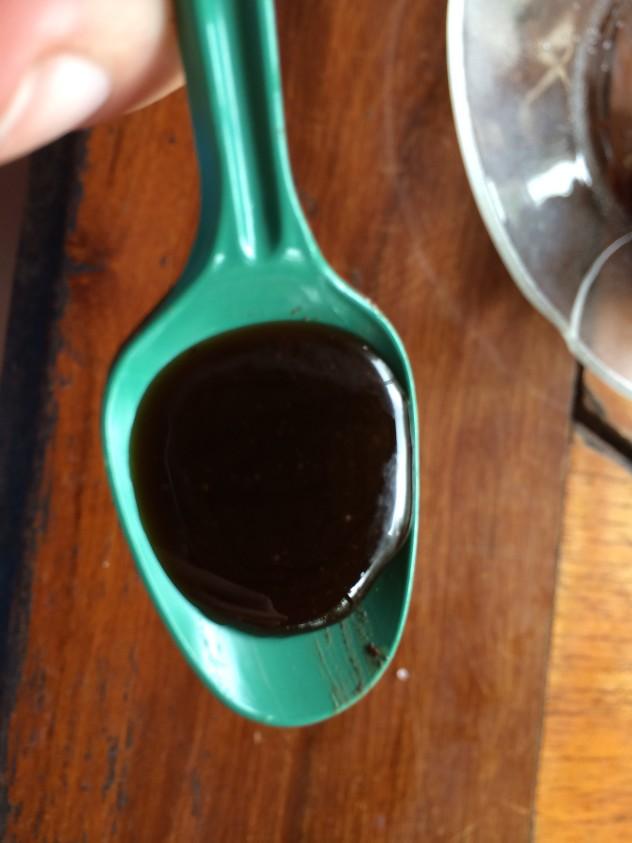
Making Cacao Liquor
For years I've been curious about making liquor using cacao pulp. People have made vinegar and honey and dried fruit leather. But why not liquor? To be clear, cacao liquor is not the same as creme de cacao, a chocolate-flavored liquor, or the same as chocolate liquor, the unsweetened liquid chocolate made from cacao beans.
The latter is a products often bought by chocolate manufacturers, and later made into chocolate & chocolate-flavored products. The cacao liquor I'm referring to is made from the cacao pulp rather than the cacao seeds. But as delicious as it is, it's also very hard to find.
I've heard of people producing such a cacao liquor, usually in small amounts, but had never before seen it for sale in any of the many cacao-producing countries I've visited. I've asked a half dozen farmers, and each one has said it's not possible, though only a couple have offered reasons why.
One said that they'd tried, but regulations in their country meant that it could not be sold without heating. But the heating process damaged the flavor, and therefore the cacao liquor wasn't worth pursuing as a product.
Last year I asked a cocoa farmer in Taiwan about making a liquor from the pulp of his beans, and he said it just wasn't possible. Yet just like the shells of the pods and the husks of the beans, cacao pulp is a massive by-product of cocoa processing.
There's a lot of pulp that drains off just within the first day, especially with larger batches of fermenting cacao.
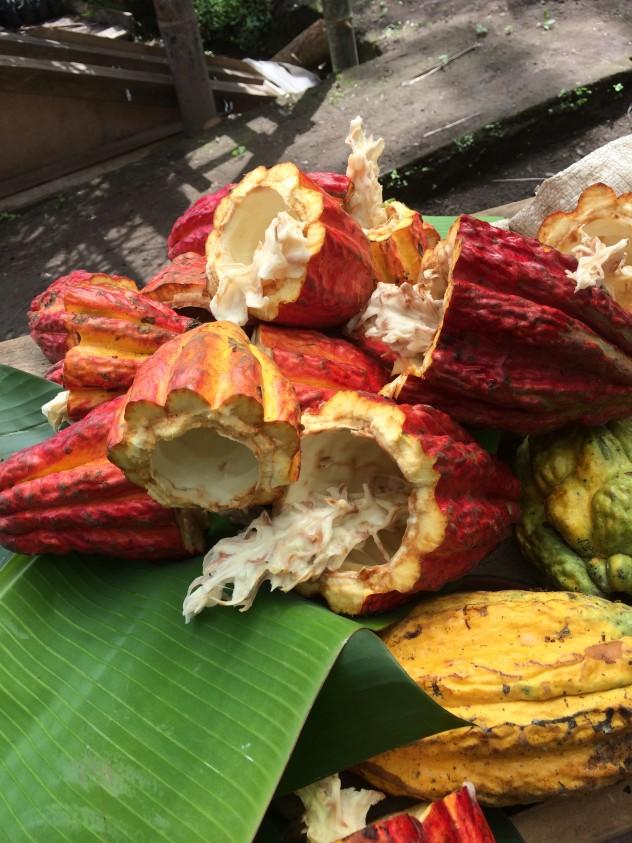
So, similar to innovations like Coffee Flour, is it possible to have a palatable cacao liquor or wine, just as we have for other high-sugar fruits? It was always a toss-up for me, because in my experience, after just a few days of fermentation, the liquid that comes off the beans smells more like an off-chardonnay than a sweet liqueur you serve over ice.
The secret is to filter off the juice right after harvest. Fermentation starts as soon as the pods are cut off the trees, and the seeds begin to germinate and create bitter flavors, many of which are eliminated during proper fermentation.
This immediate chemical reaction makes creating a truly fresh cacao juice immensely difficult. But the mix of flavors created after just a few days in the fermentation boxes means that there's definitely a sweet spot.
The issue is that the liquid must be fermented separately from the beans, though I can't say if this needs to happen before or after the cacao has the necessary microbes on it. One friend has noted that methanol levels during the distillation process also have to be carefully monitored in order to safely make a liquor.
Due to differing ambient temperatures, humidity, bacteria/yeast types, and fermentation vessels, I can't say for sure how long it might take you to make a palatable cacao liquor, but know that your cacao juice will need babysitting.
No matter what, due to the varying sugar content between varietals of cacao, the ABV (alcohol by volume) of this cacao liquor, liqueur, wine, mead— or whatever you want to call it— will also vary per batch, just like the flavors of the chocolate it's companion cacao will be made out of.
And isn't that the beauty of micro-batch anything?
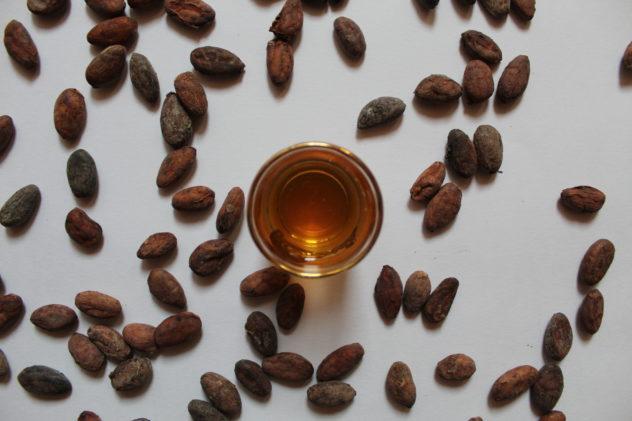
Finding Cacao Liquor
Just like wine, modern chocolate came about directly because of people's desire for liquor. It's believed that cacao was first fermented as the result of an experimental attempt to create a new alcohol using cacao fruit. And it worked.
But they also found that the beans used tasted different afterwards, and eventually they decided to cook them alongside other foods. They added them to their dishes, primarily in beverage form or as a sauce eaten with meat.
There were no portable bars or chunks as we have today, yet chocolate still was & is important, eventually coming to be used as currency. But somewhere along the way, chocolate became so important that we lost the other products people made from cacao, like how the importance of chicken breast in the US pushes most other parts of the chicken away from the limelight.
On many farms, however, cacao liquor is simply one of the few perks to working in such a tough industry. "A few metres away, a group of men sit around a large pile of pods, methodically holding the pods in one hand, while slicing them open with a machete.
A sweet milky juice that runs off the beans is collected. After a few days of distillation, it turns into a liquor. It is the only product cocoa farmers directly consume from the crop." (Source: BBC) Some farmers apparently think the cacao is used to make the imported wine they see on shelves in the market— because what else could it be making?
This on-farm use of cacao pulp, plus the limited amount and seasonality of it, means that finding cacao liquor can be quite the task. You have to weed out the chocolate-flavored or -infused products, and anything artificial. But I have made some headway.
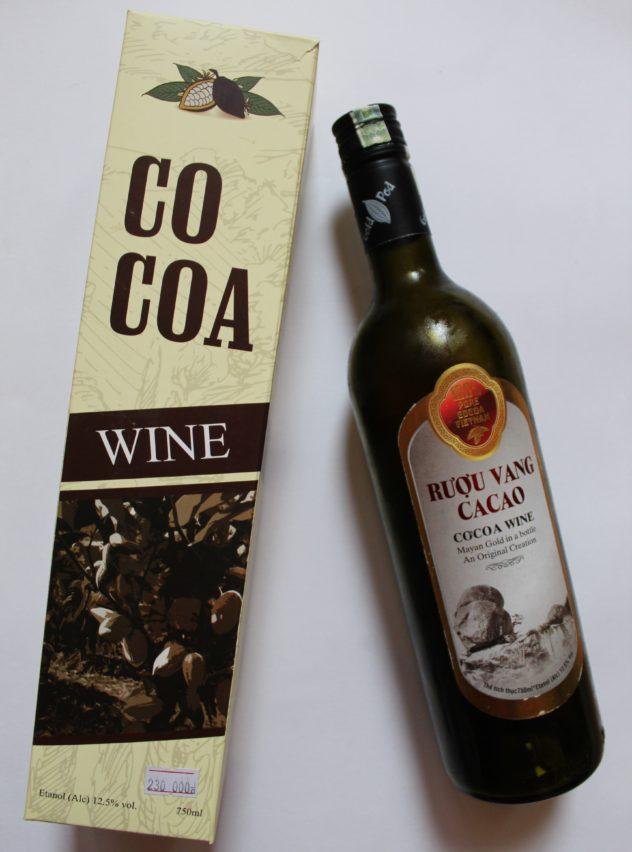
In Cuba there is a popular government-made liquor called cacao liquor, but even though it may have a cacao pulp base, it's at least partially beefed up with pure alcohol to even out the ABV.
It's part of a line of government-regulated liqueurs, so it's more similar to a port or sherry than the small-batch liqueur you'd get from most cacao farms. It can only be purchased in Cuba, but lucky for us it's also only a few dollars per liter and quite widely available.
Other places in which cacao liquors or wines are being experimented upon and sold beyond the farm to some degree are:
- United States of America (Solbeso)
- Mexico (Frucao, Ixcacau & El Toque de Aaron)
- the Dominican Republic (Carloc Artesanal & Asociación de Mujures Esperanzas Unidas {sold in person in Vicentillo, El Seibo})
- Nicaragua (Don Juan)
- Ecuador (anywhere Solbeso is sold {see above})
- Malaysia (Bar Trigona at Four Seasons Kuala Lumpur)
- Vietnam (Trong Duc Cacao)
- the Philippines (Alden Therese Wine)
- Japan (Cacaoken)
Brazil deserves a post of its own about its cacao liquor (licor de cacau), but I'll summarize the country's contributions quickly here. If you're looking to try cacao liquor somewhere, Brazil is the easiest place in the world to find it, and find quality examples of it. Since the country produces and processes so much cacao each year, they have lots of cacao pulp to use up.
Lucky for us, many producers have turned it into liquor, though much of this is consider caseiro (homemade) and therefore not for commercial sale. Some brands to keep an eye out for are: Cacauway Ceres, Naná, and Paratiana. Bonus: Cupuaçú Liquor from Amazônia Cacau Macapá.
If you happen to live in a country where cacao is grown, I'd highly recommend that you contact a local farmer or co-op about buying some of the liquor they make or the pulp they drain off of their beans. Then send some to me. Kidding!
But seriously, if you live anywhere near the source, the best and cheapest way to buy cacao liquor is to go straight to the farmers. This not only shows that there's demand for this product, but also that selling the beans is not the only way to make money off of cacao.

Cacao Pulp Products RTW
This or other products made from cacao pulp (both the juice and the solids) could be a useful source of supplemental income for farmers in cooperatives who practice central fermentation of beans. They could collect all the beans in one place and continue to develop the flavors their brand is known for.
But beyond that they could develop other products the market is interested in seeing, such as cacao honey, cacao vinegar, or even cacao sugar (think coconut sugar, but with different nutrients). Ruby chocolate? Try true chocolate, made only with cacao from one cooperative, and the cacao sugar from the same batch of beans.
There are lots of small farms around the world working on such a product, but for now the closest things I've found on the wider market are Callebaut's WholeFruit Chocolate and the Blue Stripes Cacao collection.
The hot spots for producing cacao pulp and cacao juice to sell internationally are Ecuador and Brazil. The products coming out of Ecuador tend to be cacao juice (pasteurized) and other freshly-harvested cacao pulp products.
On the other hand, Brazilian cacao juice seems to most often be sold as a freshly-frozen pulp, with much more domestic consumption than in other countries. Seeing as Brazil is said to be the origin of Forastero cacao varietals, it's not surprising that cacao plays a large role in local cuisines.
To continue my Brazilian cacao liquor blurb from above, what is most unique about Brazil is that other fruits from the Theobroma family are also consumed domestically, as both food and drink products (including liquors).
This means that cacao and other distilled fruit liquors from Brazil are more likely to be found commonly, and to be naturally integrated into cuisine & cultural practices. Recent products made from cocoa pulp include: hot cocoa sweetened with cacao juice, dried pulp added to chocolate bars, and faux-chocolate bars made from other Theobroma fruits.
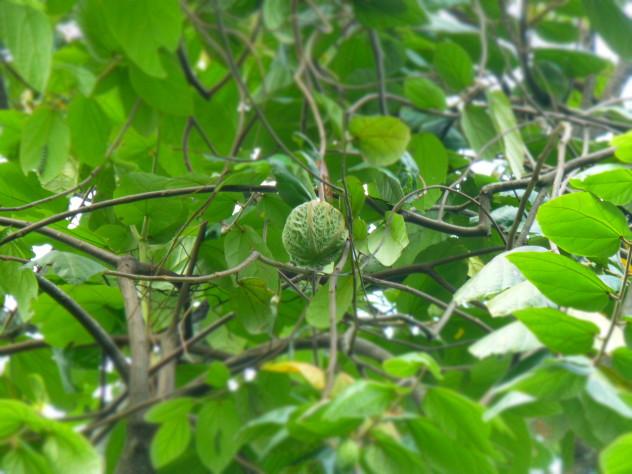
Cacao Products in Vietnam
Vietnam is not an obvious hub, but it's one of the fastest-growing cocoa origins in the world. Over the last decade, a half-dozen Vietnam-based chocolate makers have popped up. Beyond that, dozens of other makers have started to use Vietnamese cacao to craft some or all of their chocolate.
This has happened as both the volume and quality of Vietnam's cacao have continued to climb. I expect this practice to continue increasing, and hope that the number of raw cacao products produced also climbs along with it.
Other than fermenting, drying, and selling cocoa beans to make into chocolate, cocoa butter, and cocoa powder, Vietnamese cacao farmers have dreamed up multiple uses for raw cacao. While you can buy chocolate and other cocoa products all around Ho Chi Minh City, and even tour cacao plantations, it's the cacao pulp products that you should keep your eye out for.
Fresh cacao juice, cocoa wine, and cacao liquor are the most enjoyable products I found during my regrettably short first visit. For insight into how these drinks actually taste, check out my video of the experience (linked below).
What Does Cacao Liquor Taste Like?
If you found this post on cacao liquor helpful, please pin it so that others can find it, too!
Have you ever tried a cacao product other than chocolate? Did you like it?













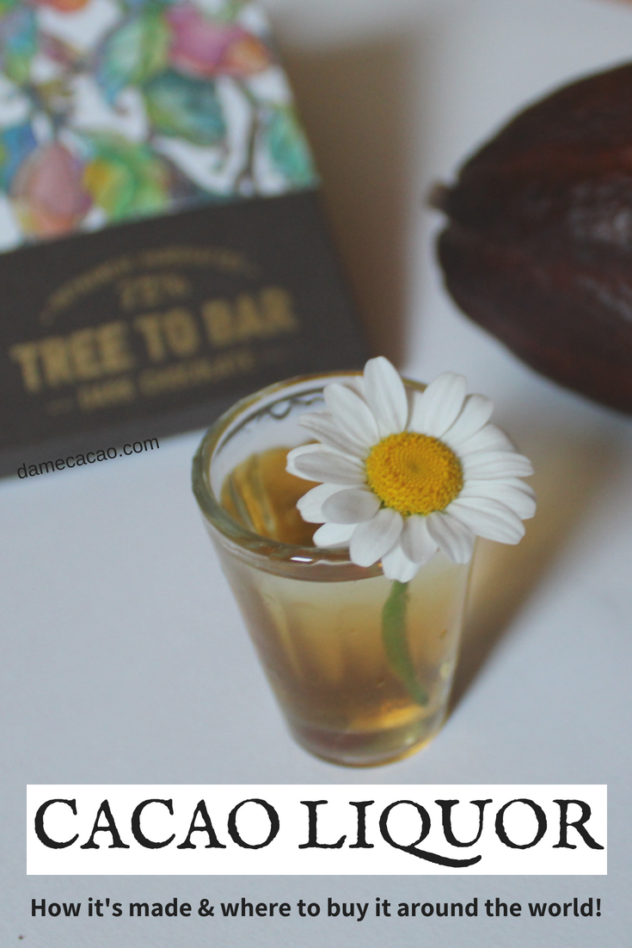
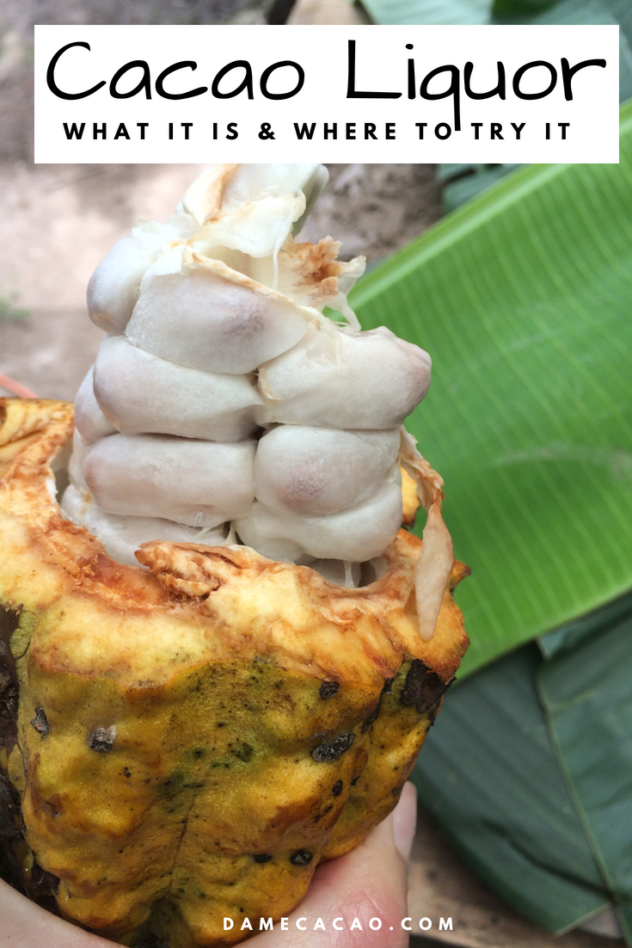
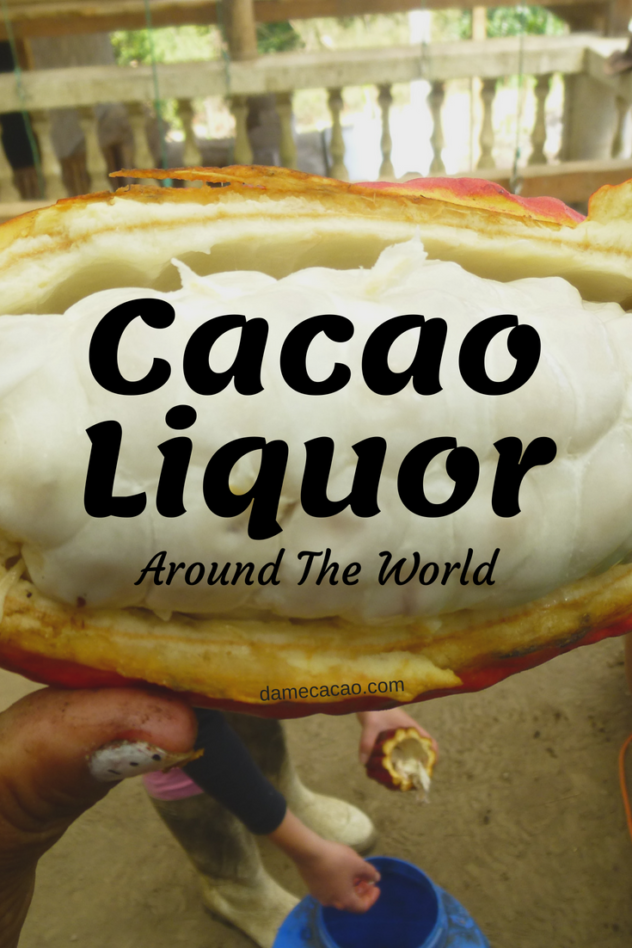




Victor Osa
Excellent work, Max. I was raised on cocoa farming (cacao for the tree) in Nigeria. I congratulate you on this piece. The images are so realistic, I thought you must have sneaked back to my dad's cacao plantation for a photo shoot. I have handled cacao in all proceedings - from seedling planting, nurturing as we watched the farm grow to trees, harvesting, fermentation, drying the seeds in the sun, and its sales for export to European chocolate industries.
For us the kids, the pulp juice (liquor) in its most natural state, was the highlight of cocoa farming. I still remember drinking rather off white milky looking liquid to the point of bloating. It was the best.
The image of the pods devoid of the seeds is quite poignant. Except that in West Africa, it served en economic purpose for the women. After some months, they would collect, burn, add some substance to it to make a unique dark chocolate looking soap. It was rather mild on the body.
Thanks for helping bring back some of the most joyful days of my childhood back in West Africa, as I continue to hack at life in Europe.
Max
Thank you, Victor, for sharing so many lovely memories! The juice of the fruits is one of my most favorite flavors in the world. I've even head of the charcoal soap you're referring to, which seems to be a popular use for the husks across the cocoa-growing world. I wish you luck at hacking it in Europe, as that's no easy feat!
-Max
Annette
Hi Max,
I have about 200 pods cleaned and fermenting right now. Day # 5. There is quite a bit of fermented liquid in the box. Do I just drain this off and put it in a container? I’m not sure exactly how the wine is made. Is there anything that you do after you remove the liquid from the box?? Do you store this or do you drink it immediately?
Max
You should collect drippings within the first 24 hours if you want to make safe-to-drink liquor-- by day 5, most of it is fermented, but it's also likely not very tasty. Next time, collect the fresh juice and try following a fruit wine-making recipe, substituting white sugar with some honey. This page may be helpful: https://www.homebrewit.com/making-wine-with-fresh-fruit-general-instructions-and-tips
Annette
Ok. Thank you very much????????
Max
No problem!
Shashikanth
Hi Max,
Nice article and research your doing there. just happened to jump to your blog we a chocolate producing company from southern India, campco chocolate factory, it is a cooperative company we are looking to give value addition to cacao pod and pulp in large scale. your help and expertise will be very much appreciated
Max
Hi, Shashikanth; thank you for the kind words. I'm not sure what you're looking for, however, as you've not asked a question. Could you elaborate?
Molly Fitzpatrick
Hi Max,
Thanks for your helpful article. I live in Ecuador. I bought a cacao pod today at the indigenous market. In researching how to ferment the bean and pulp I came across your article linked from a fermenting fb group. I clicked on the link you provided for Altísimo Chocolate and found out from their Instagram page that they went out of business last month. (Sad face).
I am going to take your suggestion and go straight to a local cacao farmer/producer and maybe find out what they do with the pulp.
I'm also going to try to grow some of the beans again. I did it before and had seedlings that didn't survive when I was out of town for a few weeks.
Previously I fermented the pulp with water kefir and it was lovely. The floral flavors are exquisite! I think I am going to try to make a fruit leather this time! So much to try out! (Happy face).
Viva el cacao!
Molly
Max
Hey, Molly! I'm sad to hear about Altísimo, as well! I never got the chance to visit. When cacao is very young, like your seedlings were, they need lots of TLC and some— but not a ton of— sunlight. I hope your next round of experiments works better, and that you can make some of that fruit leather! Maybe try a dehydrator?
Enjoy the process!
-Max
Marc
Hi Max! Great article. I've been thinking about all the waste that's generated in the making of chocolate lately and that kind of led me down the rabbit hole of researching the possibility of making wines and distilled spirits from cacao pulp. That's how I ended up here. I've also been wondering about the possibility of introducing microbes other than yeast to take the fermentation of cacao beans in a different direction. Do you know of any producers doing this? Specifically I was thinking about inncoulating fresh cacao with Koji (a type of filamentous fungus) prior to fermentation, which could lead to a more complex chocolate.
Max
Thanks, Marc! It seems to be a common rabbit hole these days. There are some people making liquors from the pulp, already, but the pulp, tantalizing as it is, isn't a big waste product relative to the husks of the seeds and the shells of the pods. But on the subject of fermentation, there are already numerous microbes introduced and unnamed during the fermentation process, beyond yeast, and each of them contributes a currently-unknowable amount to the flavour of the final chocolate. So you could certainly introduce other more specific bacteria to try to affect the flavour of the final liquor/chocolate. I don't know of any cacao producers publicly sharing their data on any experiments of this type, but it's definitely being done. Years ago I met a man in Ecuador experimenting with adding fresh fruits to the cacao at the beginning of fermentation, as so far the consensus is that more acidic fruits may have an affect. Valrhona's been playing with that idea for years.
TL;DR: yes, there are lots of people messing around with fermentation and flavour, but if you're looking to get into it yourself, I'd recommend finding a willing partner and jumping into it. There's nothing like getting your own hands dirty.
Marc
Thanks Max! Would you happen to know if there's anyone in Japan growing cacao?
Max
There's not anyone in Japan, as it gets too cold even in Okinawa, but the crew over at Timeless Chocolate (in Chatan on Okinawa) are working with local sugar cane farmers and neighboring Taiwanese cacao farmers to put together some interesting projects. I'd get in touch with them. Best of luck, Marc!
alina
Hi Max! Thank you for this lovely and informative post. I fell in love with cacao pulp here at the organic farm where I live and work. They sell their fermented+dried beans to chocolate-makers, but don't do anything with the pulp (other than use it for fermentation). I am really curious about exploring further uses, but can't seem to find information on ways to seperate it from the bean in bulk. It's notoriously difficult, but I am sure there are ways. Would you happen to know of any, or be able to put me in touch with people who have the know-how? I would really appreciate that. Thanks again for your work!
best,
alina
Max
You're very welcome for the info, Alina! From my conversations with farms, if you don't drip out the juice to separate it from the seeds within the first 2-3 hours, the pulp with all start fermenting along with the beans. So depending on the juiciness of the fruit, you may be able to drip out a small portion of that juice during the initial run, freezing it immediately until you figure out what you'd like to do with it. At the moment there's no machine or special method I've heard of, other than quick hands and a strong will. That's part of the reason why it's so uncommon to see pulp products. Good luck on further research or collection method refinement!
Michele Renee
Hi Max 🙂
What a pleasure to read your article and grateful for the in-depth quest you've been on. My mother is coming back from Brazil soon, so I must see if she can score a bottle of cacao liquor somewhere. Perchance, are you familiar with any cacao farming in Tanzania. I heard that it was difficult to produce a lot of cacao there due to lack of accessible roads to interior farms. I'm hoping to travel back there in the next year and want to check it out.
Max
Thanks for the kind words, Michele! I hope your mother manages to find a bottle, and maybe some brigadeiro, somewhere. The only cacao producer I know of in Tanzania is Kokoa Kamili, who has a website and social media, and may even welcome you for a visit if the timing matches up and you're willing to travel! Good luck on your own quest.~
Marie
hello, article was very helpfuil. I have a deep interest in cocoa specially the pulp so I was wondering if anyone can share info on how to extract the cocoa puilp. Thank you
Max
Hi, Marie! To remove the pulp you just need to open the cacao pod, preferably with a blunt object so as to not damage the beans. The pulp is right there, surrounding the beans. 🙂
orangewayfarer
This is such a great post. I first read it as cocoa (I live in south India if that explains) and then I read the whole thing. Fascinating. never tried one but gotta look for one now! We make local moonshine from rice in many parts of India
Max
Yeah, the great thing is that cocoa and cacao are the same word, just in different languages! If they make moonshine from rice, the odds are good that they're also doing it with cacao pulp, as south India produces tons of cacao. Good luck on your hunt!
Tom Forbes
Hello and nice article. Quite a bit of research. Because 100% ground cacao is called chocolate liquor in the industry, it may confuse some. Also in the Dominican Republic I have worked and visited 7 different women associations in the country who produce cacao wine. The group in Vincentillo does a nice version. I have a recipe from one group and they ferment nibs to make the wine not the pulp. The pulp is used for marmalade in the campo.
Max
Tom, thank you very much for the information! I agree that all the terminology can be confusing, especially cacao liquor versus chocolate liquor. I've also heard of this cacao pulp marmalade, but didn't have the pleasure of visiting any farms when I visited the DR a couple of years back. I'll have to rectify that asap. I appreciate your comment, and I hope you get to taste some of the many variations of cacao wine from all around the world, one day!
Peter Bette
Am a Nigerian, after reading this fascinating piece am overwhelmed. Where and how can I purchase the equipment for cocoa pulp wine/ nectar production.?
Max
As of now I don't believe there is any equipment out there for making cacao wine, but you could look into materials used for making beer at home. They may be of some use to you. Good luck in your journey, Peter!
Stan
@Tom Forbes, hello. Could you please consider sharing that recipe for making wine from cacao nibs? Thanks from Stan in the Philippines.